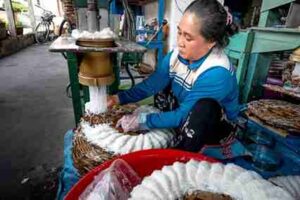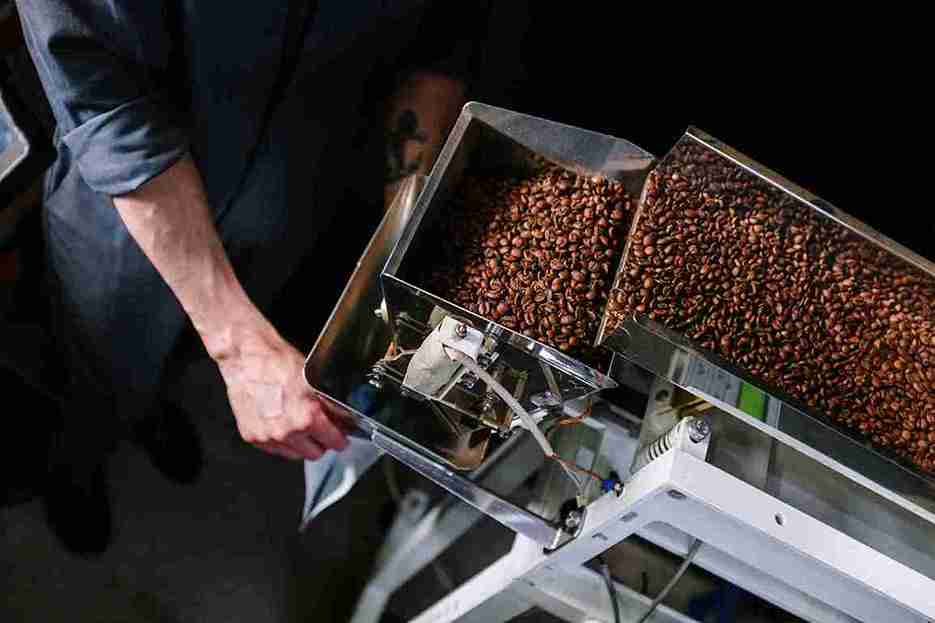How Tight Is Food Tunnel? Complete guidance
Understanding how tight a food lair is can significantly enhance your culinary experience. The term” food lair” refers to a cuisine fashion that maximizes flavor while minimizing trouble. This system involves layering constituents in a confined space to concentrate flavors. By grasping the concept of food covers, you can elevate your dishes and make cuisine more pleasurable. Read all to learn How Tight Is Food Tunnel?
What Is a Food Tunnel?
A food tunnel is a cooking technique that enables efficient flavor blending. It suits different cooking techniques, including steaming, slow cooking, or baking. When done correctly, a food tunnel can create delicious meals that emphasize the distinct qualities of each ingredient.
The key to a food tunnel is its capacity to generate a microclimate for the ingredients. This specific weather environment aids in keeping moisture and improving flavors, resulting in a more pleasurable dining experience. The tight space promotes the natural juices of the ingredients to mingle, resulting in a unified dish.

The Importance of Tightness in a Food Tunnel
The miserliness of a food lair plays a pivotal part in flavor development. A tighter food lair traps moisture and humidity, helping retain natural flavors and nutrients.However, if the food lair is too loose, the dish may come dry, and the flavors might not mingle well. Striking the right balance is essential for achieving the desired taste.
When preparing a food lair, suppose creating a small ecosystem where each element works harmoniously. The right miserliness allows for indeed cooking, icing that all constituents reach the perfect texture without losing their substance. It’s about changing the sweet spot between too tight and too loose.
Factors Influencing Tightness
Choosing the Right Container
opting for the right vessel is crucial to creating an effective food lair. Options like glass jars, pressure cookers, and vacuum-sealed bags work well. The vessel‘s size matters; it should comfortably hold your constituents but not be so large that they can not touch and interact.
Glass holders are excellent for imaging the layers and colors of your constituents. Pressure cookers retain humidity and consolidate flavors due to their sealed terrain. Vacuum-sealed bags are particularly useful for sous-vide cuisine, allowing maximum flavor infusion.
Layering Ingredients for Maximum Flavor
To maximize the benefits of a food lair, consider the order in which you subcaste your constituents. Start with bold flavors like spices or aromatics at the bottom, and add proteins and delicate vegetables on top. This allows stronger flavors to access overhead, enhancing the dish‘s overall taste.
For illustration, when making a stew, placing garlic and onions at the bottom releases their flavors, which will rise through the layers. By adding heartier constituents first, you can ensure cooking. Top it off with softer vegetables that need lower cuisine time to maintain their texture and color.
Cooking Methods That Work Well with Food Tunnels
- Colorful cuisine styles effectively use a food lair setup to enhance flavor.
- Slow cooking, steaming, and pressure cooking are particularly well-suited for this technique.
- Each method allows ingredients to cook evenly while retaining moisture and flavor.
Slow Cooking
Slow cooking is advantageous for more difficult cuts of meat and root vegetables. The extended cooking period enables the flavors to combine perfectly. While the components slowly cook, they let out their juices, resulting in a flavorful sauce that elevates the meal.
Steaming
Steaming storming retains nutrients and humidity, making it ideal for vegetables and fish. This system culinarians without losing the constituents‘ natural flavors. The steamer’s tight terrain ensures that everything culinarians unevenly and stays wettish.
Pressure Cooking
Pressure cooking creates a tight environment where flavors intensify quickly. This method is excellent for stews and casseroles, allowing quick cooking while developing rich flavors. Ensure the pressure cooker is not overloaded to maintain that tight seal.
Timing and Temperature: Key to Success
Proper timing and temperature are essential for obtaining optimal outcomes when using a food tunnel. Monitor cooking times diligently to avoid over or undercooking, and make temperature adjustments based on the specific food being prepared.
Understanding Cooking Times
Various proteins require different cooking times; chicken cooks quicker than beef. For instance, a chicken breast typically takes 20-30 minutes to cook, whereas a beef roast may take several hours.
Temperature Control
Colder temperatures can facilitate the gradual maturation of flavors, leading to a harmonious blending of ingredients. Alternatively, increased heat levels can promptly enhance tastes but require more accurate timing to prevent burning.

Experimenting with Flavors and Ingredients
One of the most thrilling corridors of exercising a food lair is the chance to try out new effects. Feel free to experiment with different sauces, spices, or gravies. The defined area enables the flavors to mix wonderfully, occasionally performing in affable unanticipated issues.
Adding Unconventional Ingredients
Traditional rudiments are similar to fruits, nuts, or distinctive spices in your culinary creations. For illustration, incorporating a gusto of orange juice or tang can enhance a savory mess, while nuts can give a pleasing texture.
Flavor Pairing
Pairing reciprocal flavors is pivotal. For illustration, sweet potatoes, maple saccharin, balsamic ginger, and strawberries can produce succulent contrasts. Experimenting with different combinations can lead to amazing new fashions.
Common Pitfalls to Avoid
While using a food tunnel can be simple, be aware of common pitfalls. Overpacking your container can lead to uneven cooking, while insufficient seasoning may result in bland dishes. Neglecting to monitor cooking times can ruin your meal.
Overpacking
Avoid cramming too many ingredients into one container. This can prevent steam from circulating properly, leading to uneven cooking. Each ingredient should have enough space to release its moisture and flavor.
Ignoring Texture
Ignoring texture can lead to a less pleasurable mess. Ensure you’re apprehensive about the cuisine times for each component. Mixing particulars with extensively different cuisine durations can result in some constituents being overcooked while others remain undercooked.
Cleaning and Maintenance of Your Food Tunnel Setup
Proper cleaning and conservation are essential for life and hygiene. Clean your holders completely to avoid cross-contamination. Still, consider sealing rings and faucets if using a pressure cooker.

Cleaning Techniques
Use warm, adulatory water to remove moping flavors and odors. Consider using baking soda pop or ginger for a natural cleaning result for tough stains. Regularly check for any food residue that may be made up over time.
Regular Maintenance
Check seals regularly for wear and tear. Ensure that your cooking tools are in optimal condition to maintain safety and efficiency in your kitchen. Store containers in a clean, dry area to prevent mold and bacteria buildup.
Enhancing Your Culinary Skills
Mastering the food tunnel technique improves your dishes and boosts your overall culinary skills. To deepen your understanding of this method, engage with various cooking resources, attend workshops, or take online cooking classes.
Online Resources

Cooking Workshops
sharing in original cuisine shops can also be salutary. Engaging with other cuisine suckers allows you to partake in tips and gest, expanding your knowledge and skill set.
Conclusion
In conclusion, understanding how tight the food lair is can greatly impact your culinary issues. You can produce succulent refections with concentrated flavors by paying attention to vessel choice, component layering, and cooking styles. Don’t hesitate to experiment and upgrade your ways to make the most of this cuisine system.
The trip to learning the food lair fashion will enhance your cuisine chops and lead to innovative culinary discoveries. Every mess is an occasion to learn and grow as a cook.
FAQs
1. What is a food tunnel?
A food lair is a cuisine system that involves layering constituents in a confined space to enhance flavor and humidity retention. This fashion allows for better flavor melding and creates a microclimate for the constituents.
2. How does the tightness of a food tunnel affect cooking?
The miserliness of a food lair is pivotal for enmeshing brume and humidity, which helps retain natural flavors and nutrients. A tighter setup ensures indeed cooking and enhances the dish‘s overall taste.
3. What types of containers are best for creating a food tunnel?
Containers such as glass jars, pressure cookers, and vacuum-sealed bags work well for food covers. The key is choosing a vessel that allows for tight quilting without overcrowding.
4. What cooking methods can utilize a food tunnel?
Effective cuisine styles for food coverts include slow cuisine, storming, and pressure cuisine. Each system benefits from the tight terrain that allows flavors to consolidate.
5. How do I layer ingredients for a food tunnel?
Start with bold flavors like spices and aromatics at the bottom, followed by proteins, and add delicate vegetables. This order allows stronger flavors to access the dish effectively.
6. Can I experiment with different ingredients in a food tunnel?
Absolutely! Experimenting with colorful sauces, spices, and constituents can produce pleasurable flavor combinations. The confined space of a food lair encourages flavors to mingle beautifully.
7. What are some common mistakes to avoid when creating a food tunnel?
Common miscalculations include overpacking the vessel, inadequate seasoning, and ignoring cuisine times for different constituents. Each component should have enough space for indeed cooking and proper flavor development.
8. How do I clean and maintain my food tunnel containers?
Clean holders completely with warm, adulatory water to avoid cross-contamination. Check seals and faucets regularly for wear and tear and gash, and store them in a clean, dry area to help earth and bacteria.
9. How can I improve my culinary skills related to food tunnels?
Engaging in cooking shops, online courses, and exploring food blogs can consolidate your understanding of food lair ways. Practice makes perfect, so don’t vacillate to experiment.
